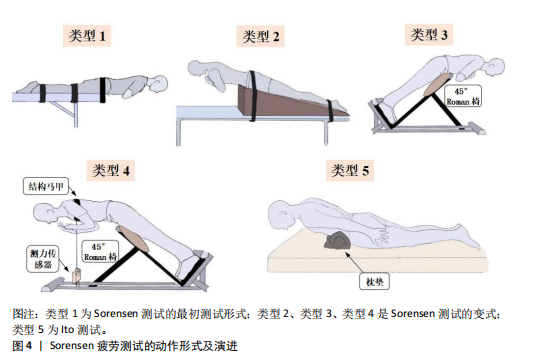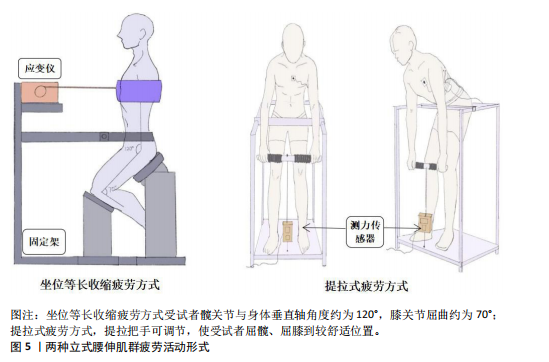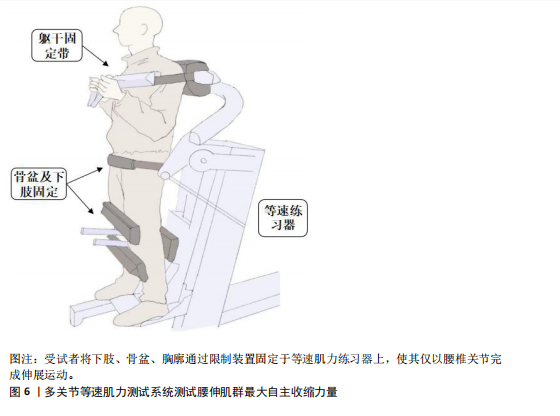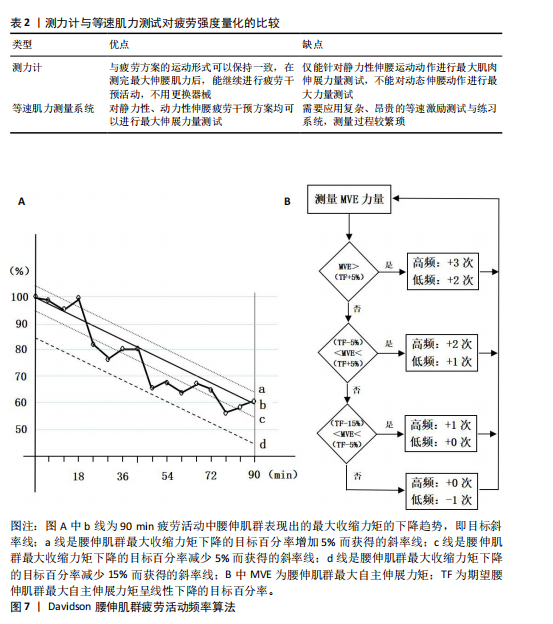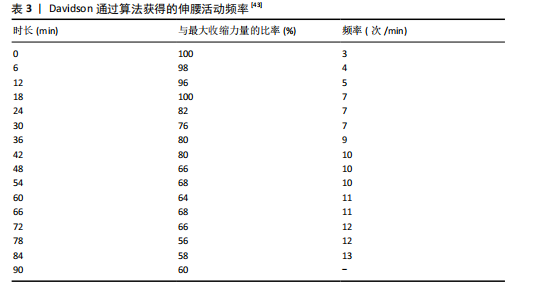[1] ADAMOVÁ B. Assessment of Lumbar Extensor Muscles in the Context of Trunk Function, a Pilot Study in Healthy Individuals. Appl Sci. 2021;11(20):9518.
[2] PADWAL J, BERRY DB, HUBBARD JC, et al. Regional differences between superficial and deep lumbar multifidus in patients with chronic lumbar spine pathology. BMC Musculoskelet Disord. 2020;21(1):764.
[3] ZSOY G, SZEN H, SOYLU AR. The effect of trunk extensors and abdominal muscle fatigue on static and dynamic balance. Kinesiol Sloven. 2022;28(3):136-153.
[4] KIRMIZI M, YALÇINKAYA ÇOLAK G, SALIK ŞENGÜL Y, et al. Investigation of trunk muscle endurance and standing balance according to severity of disability in women with moderate to severe disability due to neck pain. Agri. 2024;36(4):248-256.
[5] STEELE J, FISHER J, PERRIN C, et al. Does change in isolated lumbar extensor muscle function correlate with good clinical outcome? A secondary analysis of data on change in isolated lumbar extension strength, pain, and disability in chronic low back pain. Disabil Rehabil. 2019;41(11):1287-1295.
[6] VLAZNA D, ADAMOVA B, KRKOSKA P, et al. Strength and endurance of the lumbar extensor muscles and their predictors: A cross-sectional study in healthy subjects. J Electromyogr Kinesiol. 2025;80:102973.
[7] ANSARI S, SHARMA S. Does multifidus muscle fatigue asymmetry exist in athletes with chronic low back pain. Sport Sci Hlth. 2024;20(2):449-454.
[8] SANTOS PJ, ARAGÃO-SANTOS JC, CARVALHO EÁN, et al. Functional vs. dual-task training effects on trunk muscle function and functional fitness in older women with and without chronic low back pain: A randomized clinical trial. Gait Posture. 2024;114:35-41.
[9] ESFAHANI NH, DOMMERHOLT J, REZAEIAN Z. Core Muscles Endurance in Sedentary Staffs with and without Nonspecific Chronic Low Back: A Cross-sectional Study. MLTJ. 2021; 11(1):136.
[10] GONZÁLEZ-GÁLVEZ N, VAQUERO-CRISTÓBAL R, MARCOS-PARDO PJ. Effect of Pilates Method on muscular trunk endurance and hamstring extensibility in adolescents during twelve weeks training and detraining. J Bodyw Mov Ther. 2020;24(2):11-17.
[11] COLEMAN M, LINIÈRES J, THERY C, et al. Changes in isokinetic trunk muscle strength and endurance after two different restoration programs in people with chronic low back pain: A longitudinal retrospective study. Heliyon. 2024;10(15):e34914.
[12] ALAHMARI KA, RENGARAMANUJAM K, REDDY RS, et al. The immediate and short-term effects of dynamic taping on pain, endurance, disability, mobility and kinesiophobia in individuals with chronic non-specific low back pain: A randomized controlled trial. PLoS One. 2020;15(9):e0239505.
[13] DEODATO M, SAPONARO S, ŠIMUNIČ B, et al. Trunk muscles’ characteristics in adolescent gymnasts with low back pain: a pilot study on the effects of a physiotherapy intervention including a postural reeducation program. J Man Manip Ther. 2024;32(3):310-324.
[14] CRUZ-MONTECINOS C, NÚÑEZ-CORTÉS R, GUZMÁN-GONZÁLEZ B, et al. The Relevance of Dual Tasking for Improving Trunk Muscle Endurance After Back Surgery. Arch Phys Med Rehabil. 2021;102(3):463-469.
[15] HAN G, FAN Z, YUE L, et al. Paraspinal muscle endurance and morphology (PMEM) score: a new method for prediction of postoperative mechanical complications after lumbar fusion. Spine J. 2024;24(10):1900-1909.
[16] MCMORRIS T, BARWOOD M, CORBETT J. Central fatigue theory and endurance exercise: Toward an interoceptive model. Neurosci Biobehav Rev. 2018;93:93-107.
[17] PATIKAS DA, WILLIAMS CA, RATEL S. Exercise-induced fatigue in young people: advances and future perspectives. Eur J Appl Physiol. 2018;118(5):899-910.
[18] ENOKA RM, DUCHATEAU J. Translating Fatigue to Human Performance. Med Sci Sports Exerc. 2016;48(11):2228-2238.
[19] BLAZEVICH AJ, COLLINS DF, MILLET GY, et al. Enhancing Adaptations to Neuromuscular Electrical Stimulation Training Interventions. Exerc Sport Sci Rev. 2021;49(4):244-252.
[20] CARROLL TJ, TAYLOR JL, GANDEVIA SC. Recovery of central and peripheral neuromuscular fatigue after exercise. J Appl Physiol (1985). 2017;122(5):1068-1076.
[21] BATSON G. Exercise-induced central fatigue: a review of the literature with implications for dance science research. J Dance Med Sci. 2013;17(2):53-62.
[22] MARCO G, ALBERTO B, TAIAN V. Surface EMG and muscle fatigue: multi-channel approaches to the study of myoelectric manifestations of muscle fatigue. Physiol Meas. 2017;38(5):R27-R60.
[23] DECORTE N, LAFAIX PA, MILLET GY, et al. Central and peripheral fatigue kinetics during exhaustive constant-load cycling. Scand J Med Sci Sports. 2012;22(3):381-391.
[24] PAKSOY Y, KPOBI D, HENSCHKE J, et al. A comparison of individual force decline profiles during a fatiguing eccentric trunk flexion and extension protocol: a pilot study. Front Sports Act Living. 2024;6:1431607.
[25] CHOI WJ, KIM WD, PARK DC, et al. Comparison of compensatory lumbar movement in participants with and without non-specific chronic low back pain: A cross-sectional study. J Back Musculoskelet Rehabil. 2022;35(6):1365-1372.
[26] 伍磊鑫,李巍.腰伸肌力量训练对持续性慢性非特异性腰痛患者功能障碍和活动能力的影响[J].颈腰痛杂志,2021, 42(2):285-286.
[27] 汤成文.腰椎递进阻力训练对战士腰肌力和核心肌耐力的影响[J].颈腰痛杂志, 2020,41(1):123.
[28] HANSEN JW. Postoperative management in lumbar disc protrusions. i. indications, method and results. ii. follow-up on a trained and an untrained group of patients. Acta Orthop Scand Suppl. 1964:Suppl 71:1-47.
[29] BÜYÜKŞIRECI DE, DEMIRSOY N, MIT S, et al. Comparison of the Effects of Myofascial Meridian Stretching Exercises and Acupuncture in Patients with Low Back Pain. J Acupunct Meridian Stud. 2022;15(6):347-355.
[30] BIERING-SØRENSEN F. Physical measurements as risk indicators for low-back trouble over a one-year period. Spine (Phila Pa 1976). 1984;9(2):106-119.
[31] ALARANTA H, HURRI H, HELIÖVAARA M, et al. Non-dynamometric trunk performance tests: reliability and normative data. Scand J Rehabil Med. 1994;26(4):211-215.
[32] ITO T, SHIRADO O, SUZUKI H, et al. Lumbar trunk muscle endurance testing: an inexpensive alternative to a machine for evaluation. Arch Phys Med Rehabil. 1996;77(1):75-79.
[33] MANNION AF, CONNOLLY B, WOOD K, et al. The use of surface EMG power spectral analysis in the evaluation of back muscle function. J Rehabil Res Dev. 1997;34(4):427-439.
[34] LATIMER J, MAHER CG, REFSHAUGE K, et al. The reliability and validity of the Biering-Sorensen test in asymptomatic subjects and subjects reporting current or previous nonspecific low back pain. Spine (Phila Pa 1976). 1999;24(20):2085-2089.
[35] DAVIDSON BS, MADIGAN ML, NUSSBAUM MA. Effects of lumbar extensor fatigue and fatigue rate on postural sway. Eur J Appl Physiol. 2004;93(1-2):183-189.
[36] DUPEYRON A, PERREY S, MICALLEF JP, et al. Influence of back muscle fatigue on lumbar reflex adaptation during sudden external force perturbations. J Electromyogr Kinesiol. 2010;20(3):426-432.
[37] HOSSEINZADEH M, ASSAR S, SOLTANIRAD S, et al. Test-retest reliability and validity of a newly instrumented device for measuring trunk extensor muscles endurance in healthy male participants: a randomized cross-over study. Sport Sci Hlth. 2024;20(3):853-861.
[38] CHAMPAGNE A, DESCARREAUX M, LAFOND D. Back and hip extensor muscles fatigue in healthy subjects: task-dependency effect of two variants of the Sorensen test. Eur Spine J. 2008;17(12):1721-1726.
[39] DEMOULIN C, VANDERTHOMMEN M, DUYSENS C, et al. Spinal muscle evaluation using the Sorensen test: a critical appraisal of the literature. Joint Bone Spine. 2006; 73(1):43-50.
[40] LARSON DJ, BROWN SHM. The effects of trunk extensor and abdominal muscle fatigue on postural control and trunk proprioception in young, healthy individuals. Hum Mov Sci. 2018;57:13-20.
[41] CASTRO-PIÑERO J, MARIN-JIMENEZ N, FERNANDEZ-SANTOS JR, et al. Criterion-Related Validity of Field-Based Fitness Tests in Adults: A Systematic Review. J Clin Med. 2021;10(16):3743.
[42] JUAN-RECIO C, PRAT-LURI A, GALINDO A, et al. Is the Side Bridge Test Valid and Reliable for Assessing Trunk Lateral Flexor Endurance in Recreational Female Athletes? Biology (Basel). 2022;11(7):1043.
[43] SHAW J, JACOBS JV, VAN DILLEN LR, et al. Understanding the Biering-Sørensen test: Contributors to extensor endurance in young adults with and without a history of low back pain. J Electromyogr Kinesiol. 2024;74:102854.
[44] DEDERING A, HARMS-RINGDAHL K, NÈMETH G. Back extensor muscle fatigue in patients with lumbar disc herniation. Pre-operative and post-operative analysis of electromyography, endurance time and subjective factors. Eur Spine J. 2006; 15(5):559-569.
[45] PETRIČ M, ZALETEL-KRAGELJ L, VAUHNIK R. Characteristics and usefulness of trunk muscle endurance tests on the Roman chair in healthy adults. PeerJ. 2022;10:e14469.
[46] MANNION AF, DUMAS GA, STEVENSON JM, et al. The influence of muscle fiber size and type distribution on electromyographic measures of back muscle fatigability. Spine (Phila Pa 1976). 1998;23(5):576-584.
[47] NG JK, RICHARDSON CA. Reliability of electromyographic power spectral analysis of back muscle endurance in healthy subjects. Arch Phys Med Rehabil. 1996;77(3):259-264.
[48] SUTER E, LINDSAY D. Back muscle fatigability is associated with knee extensor inhibition in subjects with low back pain. Spine (Phila Pa 1976). 2001;26(16):E361-366.
[49] BEHENNAH J, CONWAY R, FISHER J, et al. The relationship between balance performance, lumbar extension strength, trunk extension endurance, and pain in participants with chronic low back pain, and those without. Clin Biomech (Bristol). 2018;53:22-30.
[50] PATTERSON CS, LOHMAN E, ASAVASOPON S, et al. The influence of hip extensor and lumbar spine extensor strength on lumbar spine loading during a squat lift. J Electromyogr Kinesiol. 2022;62:102620.
[51] MÜLLER R, STRÄSSLE K, WIRTH B. Isometric back muscle endurance: an EMG study on the criterion validity of the Ito test. J Electromyogr Kinesiol. 2010;20(5):845-850.
[52] HAN G, ZHOU S, WANG W, et al. Correlations between paraspinal extensor muscle endurance and clinical outcomes in preoperative LSS patients and clinical value of an endurance classification. J Orthop Translat. 2022;35:81-86.
[53] YILDIRIM KALABALIK G, ORTANCIL Ö, EGE F. Low back pain frequency and the related risk factors in nurses and caregivers. Agri. 2024;36(3):171-180.
[54] HU B, NING X. The influence of lumbar extensor muscle fatigue on lumbar-pelvic coordination during weightlifting. Ergonomics. 2015;58(8):1424-1432.
[55] AHMADI M, NODEHI MOGHADAM A, BAKHSHI M, et al. The duration effects of lumbar extensor muscle fatigue on postural control in soccer players. Med J Islam Repub Iran. 2017;31:112.
[56] HOSEINPOOR TS, KAHRIZI S, MOBINI B. Trunk extensor muscle fatigue influences trunk muscle activities. Work. 2015;51(4): 793-797.
[57] BOUCHER JA, ABBOUD J, NOUGAROU F, et al. The Effects of Vibration and Muscle Fatigue on Trunk Sensorimotor Control in Low Back Pain Patients. PLoS One. 2015; 10(8):e0135838.
[58] CHAPPELL JD, HERMAN DC, KNIGHT BS, et al. Effect of fatigue on knee kinetics and kinematics in stop-jump tasks. Am J Sports Med. 2005;33(7):1022-1029.
[59] ORTIZ A, OLSON SL, ETNYRE B, et al. Fatigue effects on knee joint stability during two jump tasks in women. J Strength Cond Res. 2010;24(4):1019-1027.
[60] TROUP JD, CHAPMAN AE. Changes in the waveform of the electromyogram during fatiguing activity in the muscles of the spine and hips: the analysis of postural stress. Electromyogr Clin Neurophysiol. 1972;12(4):347-365.
[61] HÄGG GM. Interpretation of EMG spectral alterations and alteration indexes at sustained contraction. J Appl Physiol (1985). 1992;73(4):1211-1217.
[62] DESCARREAUX M, LAFOND D, CANTIN V. Changes in the flexion-relaxation response induced by hip extensor and erector spinae muscle fatigue. BMC Musculoskelet Disord. 2010;11:112.
[63] 邢聪,陈建强,项贤林,等.腰伸肌群疲劳对上肢鞭打动作生物力学特征的影响及生理原因探析[J].中国运动医学杂志, 2019,38(10):851-858.
[64] UMEZU Y, KAWAZU T, TAJIMA F, et al. Spectral electromyographic fatigue analysis of back muscles in healthy adult women compared with men. Arch Phys Med Rehabil. 1998;79(5):536-538.
[65] KANKAANPÄÄ M, LAAKSONEN D, TAIMELA S, et al. Age, sex, and body mass index as determinants of back and hip extensor fatigue in the isometric Sørensen back endurance test. Arch Phys Med Rehabil. 1998;79(9):1069-1075.
[66] LATIKKA P, BATTIÉ MC, VIDEMAN T, et al. Correlations of isokinetic and psychophysical back lift and static back extensor endurance tests in men. Clin Biomech (Bristol). 1995; 10(6):325-330.
[67] 邢聪,吴瑛,项贤林,等.人体运动链补偿策略的生理特性及其对运动训练的影响研究进展[J].中国运动医学杂志,2017, 36(10):922-926.
[68] PLAMONDON A, TRIMBLE K, LARIVIÈRE C, et al. Back muscle fatigue during intermittent prone back extension exercise. Scand J Med Sci Sports. 2004;14(4):221-230.
|


